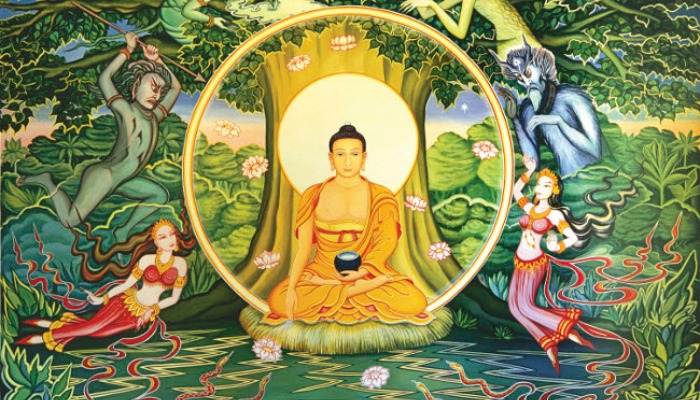
Author’s Note: If you’re wondering why a list of 9 begins with 6 it means you’re in the right place but at the wrong time. Head over to part 1 for some context. Or if you like to live dangerously, continue reading and play catch up later. For everyone else, Mormon or otherwise, enjoy.
Now, Where Were We…
In the preceding article, we covered Karma, Dharma, Universal Oneness, how all paths lead to God, and a practice of Yoga. Here is a brief refresh: Karma is the law of cause and effect. Through it, we create our world, both individually and collectively, through our thoughts and actions. Dharma is our responsibility, or duty, to act in loving harmony with the law of Karma. The responsibility is underlined by both the spiritual and physical oneness of all things. We live in a universe where all things, through relationships, are sacred neighbors. And because God is love, He values our devotion more than specific ways we might show our devotion. So all offerings are accepted by Him. And lastly, through Yoga, we are able to practice bringing our spirit and body into alignment in preparation for what comes next…
6 Meditation
Meditation is the fuller picture of yoga. It is the practice of turning inwards. As a practice of yoga, meditation is of course subdivided into its own different schools. Some focus just on the breath, some utilize mantras, others seek after contemplation. However, they all utilize the same idea of gaining self-awareness and learning the difference between ourselves and our thoughts.

The metaphor the Bhagavad Gita uses is that of the Field of the Knower. The field is your mind and body. And the knower is your essential self. It is difficult to be aware of this division as we sometimes aren’t even aware we are thinking. You as the knower farm the field of body and mind with conscious choices and thoughts. Then, through Karma, your reward is returned to you by the field and you harvest what you have sown.
To better understand the distinction between you as the conscious knower and the field of body and mind try this: think no thoughts for 30 seconds. Pull out a timer and do it. You might be successful for a few seconds but your mind will pull your attention away. If you aren’t mindful enough, after 20 seconds you might be thinking about something without realizing you’ve been distracted. But once you realize a thought has carried you away, let it go, and bring yourself back to attentiveness. This is the practice of meditation.
 To me it feels like all day, every day I am floating in the river of my thoughts. I paddle a bit and attempt to steer but ultimately, I go where the river takes me. The path of the river, however, I have created through Karma over a lifetime of thought and action. Mostly, I am unaware of the river’s flow because I am caught in it. But if I try to stop, stand up, or resist the flow, I feel the full force of my thoughts racing at me. Meditation is the practice of standing up and strengthening your spiritual and mental attention against the flow of the river.
To me it feels like all day, every day I am floating in the river of my thoughts. I paddle a bit and attempt to steer but ultimately, I go where the river takes me. The path of the river, however, I have created through Karma over a lifetime of thought and action. Mostly, I am unaware of the river’s flow because I am caught in it. But if I try to stop, stand up, or resist the flow, I feel the full force of my thoughts racing at me. Meditation is the practice of standing up and strengthening your spiritual and mental attention against the flow of the river.
Then over time, as your mental muscles grow, you can actively move against the current. You might not have much control over the thoughts that enter your mind, but through meditation, you can strengthen your capacity to choose what to do with your thoughts. This increased capacity of choice in thought then extends to an increased capacity of conscious choice driven action in action. In short, meditation is the key to developing and strengthening our agency.
That Mormons should incorporate meditation is a no-brainer. In the next couple of sections I’ll detail some of the spiritual benefits of meditative yoga, but suffice to say this: if doctors could take all the benefits of meditation and stuff it into a pill, you would pay any amount of money for it. Meditation is scientifically proven to make us happier, healthier, wiser, more compassionate, smarter, and less anxious among other antidepressant effects.
To top it all off, President David O. Mckay said “we pay too little attention to the value of meditation… In our worship, there are two elements: One is spiritual communion arising from our own meditation; the other, is instruction from others… Of the two, the more profitable introspectively is meditation.” President Mckay that meditative experience was an unutilized gift of spiritual growth.
7 Samadhi
The ultimate goal of meditative yoga is the attainment of Samadhi. This Sanskrit word means essentially total unification of mind, body, spirit, and God. It is the full realization of the yoke of meditative yoga. Through prolonged periods of intense contemplative meditation, this unification is able to be achieved. And this unity is such that all distinction between self, world, and Divine fall away. Samadhi is to experience that spiritual oneness of all things and the divinity of your own self as well as all sacred neighbors in the universe.
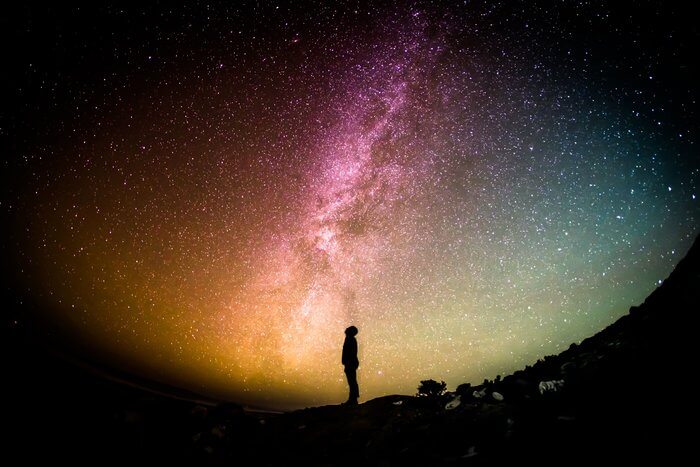 What is important to know is that Samadhi is not a permanent experience. It is more like getting above the clouds while hiking on a cloudy day, only to descend once more into the canyon below. To continue the river metaphor I used above, Samadhi is like leaving the river to know there are lands beyond.
What is important to know is that Samadhi is not a permanent experience. It is more like getting above the clouds while hiking on a cloudy day, only to descend once more into the canyon below. To continue the river metaphor I used above, Samadhi is like leaving the river to know there are lands beyond.
In Samadhi is where God is known. This experience isn’t about the exchange of information. Rather, it is about being in one another’s presence. How many of us can understand this feeling with those we love? Simply being together can be more powerful, more intimate, than any exchange of information could ever be.
In the same conference address, President Mckay deemed meditation a form of prayer expressed in the language of the soul. He said, “meditation is the most secret, most sacred doors through which we pass into the presence of the Lord.” This sacred door is how we enter the Holy of Holies of our own minds and commune with God.
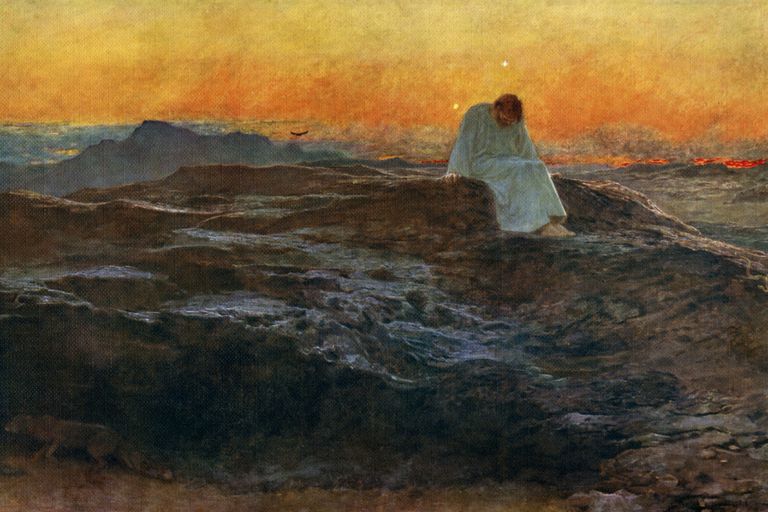 When Jesus entered the wilderness and fasted for 40 days, Mckay says, he was meditating. Jesus utilized the solitude provided by the wilderness to meditatively commune God. Often Jesus retreated to wild solitude to recharge after he performed miracle after miracle. He did this after multiplying loaves and fishes, on the Mount of Transfiguration, and even in Gethsemane.
When Jesus entered the wilderness and fasted for 40 days, Mckay says, he was meditating. Jesus utilized the solitude provided by the wilderness to meditatively commune God. Often Jesus retreated to wild solitude to recharge after he performed miracle after miracle. He did this after multiplying loaves and fishes, on the Mount of Transfiguration, and even in Gethsemane.
President Mckay, as well as other Christian or Hindu mystics, see prayerful contemplative meditation as the door to the presence of God. Continually they affirm that transcendent experiences can be had by all (something that Joseph Smith stood by). Mckay said, “the greatest comfort that can come to us in this life is to sense the realization of communion with God.”
This communion is the fulfillment of Karma and Dharma—a life lived in loving harmony with a universe of sacred neighbors. It is the experience of sacred oneness.
8 Enlightenment
A side effect of Samadhi is personal illumination or enlightenment. Once you get above the clouds and see beyond the illusion of separation, the world takes on a new light—a new vibrancy. The divine quality of all things can be felt and all things take on spiritual meaning. Chapter 2 of the Bhagavad Gita reads, “just as a reservoir is of little use when the whole countryside is flooded, scriptures are of little use to the illumined man or woman, who sees the Lord everywhere.” This is a curious verse that gives me pause every time I read it. Krishna continues,
I am the taste of pure water and the sacred radiance of the sun and moon. I am the sacred word and the sound heard in the air, and the courage of human beings. I am the sweet fragrance in the earth and the radiance of fire; I am the life in every creature and the striving of the spiritual aspirant. My eternal seed…is to be found in every creature…I am desire itself, if that desire is in harmony with the purpose of life.
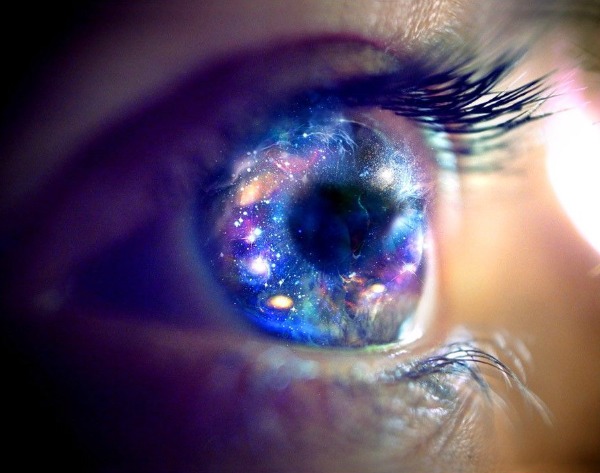 Seeing God in everything is one of the privileges of my own life. Instead of revealing Himself in fiery glory from transcendent visions, God shows Himself to me in my family and friends. God shows Himself to me in the songs of birds and the splashing of water, the wind blowing through leaves and the lightning that splits the sky. And more curiously, God has shown Himself to me in the mundane living of my little life—the eating of my food, the taste of water, the scars I accumulate, the presence of those I love, and the company of the wild places of the Earth. All things can be scripture to me if I have the eyes to see the sacredness of my neighbor.
Seeing God in everything is one of the privileges of my own life. Instead of revealing Himself in fiery glory from transcendent visions, God shows Himself to me in my family and friends. God shows Himself to me in the songs of birds and the splashing of water, the wind blowing through leaves and the lightning that splits the sky. And more curiously, God has shown Himself to me in the mundane living of my little life—the eating of my food, the taste of water, the scars I accumulate, the presence of those I love, and the company of the wild places of the Earth. All things can be scripture to me if I have the eyes to see the sacredness of my neighbor.
9 Cycles of Rebirth
Of all the ideas present within Hinduism and Eastern spirituality at large, that of reincarnation is one of the strangest—at least to our Christian minds. Everything discussed so far, Dharma, Karma, Oneness, Sadhana, and Yoga all feed into this idea of continual rebirth. When a person dies, their spirit goes to an afterlife. There they go through a life review so they can learn about how they adhered to the highest Dharma and what Karma they still have to work out. Then they are reborn back into mortality to resume their spiritual journey where they left off. On and on the cycle goes until the person has no more Karma to work out and they are at last freed from the cycle of rebirth. Once freed they are brought into lasting and final unification with God.
This view of death and spiritual progress is obviously cyclical. It is more focused on progress through an eternal round of births and deaths. Surprisingly enough, Mormonism is way more friendly to this idea of eternal progress. We existed somehow as raw intelligence, then were cultivated by God into spirits, then born into mortality to experience the rawness of life. Death separates us from our bodies for us to continue our growth and work of compassion to eventually be resurrected and be a perfect union of body and spirit. Then on to inherit the divine nature and the quality of life enjoyed by all divine beings.
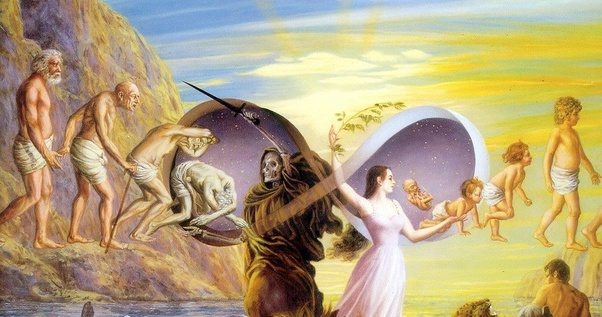 In Hinduism, the purpose of life is to realize God, and until this is done, the spirit will continually be reborn. The beautiful thing about this process is that life can be lived over and over again, however long it takes. God isn’t interested in damnation. He wants to make sure you gain unity with Him. And His patience is endless.
In Hinduism, the purpose of life is to realize God, and until this is done, the spirit will continually be reborn. The beautiful thing about this process is that life can be lived over and over again, however long it takes. God isn’t interested in damnation. He wants to make sure you gain unity with Him. And His patience is endless.
The Bhagavad Gita makes sure to point out that whatever a person worships they will eventually attain, in one life or another. This means that no soul who truly desires God, the Lord of Love, will ever be lost. But it also means that particularly cruel people will live lives of cruelty over and over. If what is desired is selfishness, power, and the suffering of others, the field of Karma can only return a person to a life where more of the same is achieved. However, all is never lost. The cycle continues. The choice to change is always open. The door to a hellish eternity of reincarnation is locked from the inside.
This is remarkably similar to the Mormon concept of the degrees of heaven. Doctrine and Covenants section 88 lays out a view of these degrees of glory. The idea presented is that each person can only attain that which they will receive. You can only inherit celestial glory if you live a celestial life in loving harmony with all sacred neighbors. In Mormonism, as in Hinduism, the great law underlying all things is that of love. If you do not live a life of love, you cannot inherit celestial glory.
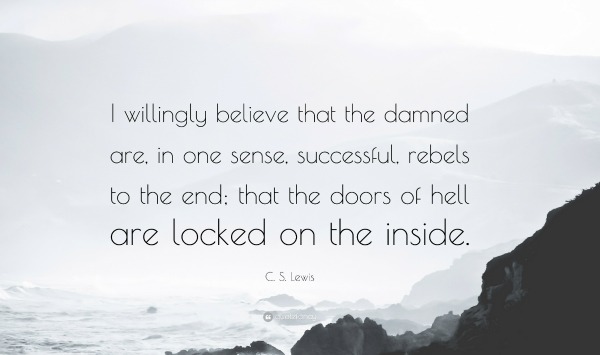 In Mormonism, there is no timeline attached to a soul’s eternal spiritual progress. There is no cosmic due date. God’s patience is endless because God is love. Joseph Smith said, “there is never a time when the spirit is too old to approach God. All are within the reach of pardoning mercy, who have not committed the unpardonable sin…neither in this world, nor the world to come.” The door to hell is locked from the inside.
In Mormonism, there is no timeline attached to a soul’s eternal spiritual progress. There is no cosmic due date. God’s patience is endless because God is love. Joseph Smith said, “there is never a time when the spirit is too old to approach God. All are within the reach of pardoning mercy, who have not committed the unpardonable sin…neither in this world, nor the world to come.” The door to hell is locked from the inside.
God is more interested in our spiritual cultivation into beings like Him than he is in damning us to an eternity of torment. This is one of the most attractive tenets of Mormon theology. God is our father, friend, and companion through eternity. He is eager to have a relationship with us and is happy with even our first faltering steps along the path of spiritual enlightenment.
At Last, We Are Enlightened
The overall message I hope any reader, Mormon or otherwise, can take from this piece is that the world is a rich, beautiful, complex tapestries of spirituality. God is to be found in all of it. Hinduism is soaked through with spiritual truth and insight. The Bhagavad Gita is one of the finest books I have ever had the privilege of reading. It is on my bookshelf right next to my Book of Mormon and Triple Combination, along with the Upanishads and Dhammapada; other classics of Indian spirituality.
To my own surprise, Hinduism and Eastern spirituality have many shocking similarities to Mormonism. I’ve often thought that Mormonism is Christianity with an Eastern flare. The work of the Restoration, as wrought by Joseph Smith, was to bring together the best of East and West into a Gospel of Love that is as universal as it is true.
Though we might use different words, by and large, we are all in the same spiritual conversation. The Gospel is large, expansive, and inclusive of “all good things”. While the Book of Mormon is the most correct book, it is far from being the only correct book. We are all yoked together with God in this great spiritual endeavor. We would do well to lift together the yoke of love in a universe full of sacred neighbors. All spiritual paths have value and before we as Mormons seek to give the world the Restored Gospel, we should first see to find to where fragments might already be present.
If You Were Dangerous…
If you lived dangerously and skipped part 1, we have to go back. Take some centering breathes and head over to part 1 for the underlying spiritual framework that supports your newly enlightened self.





